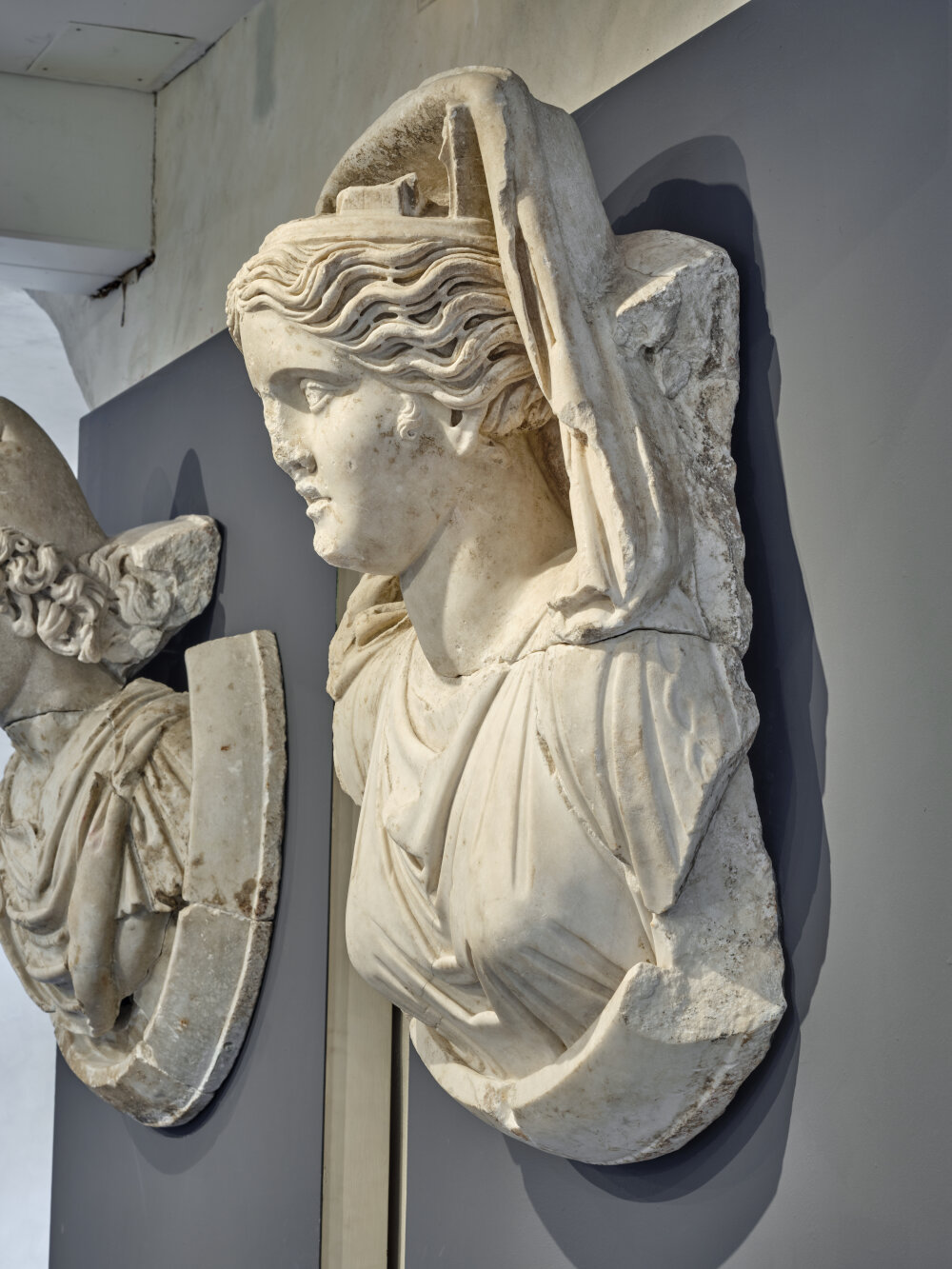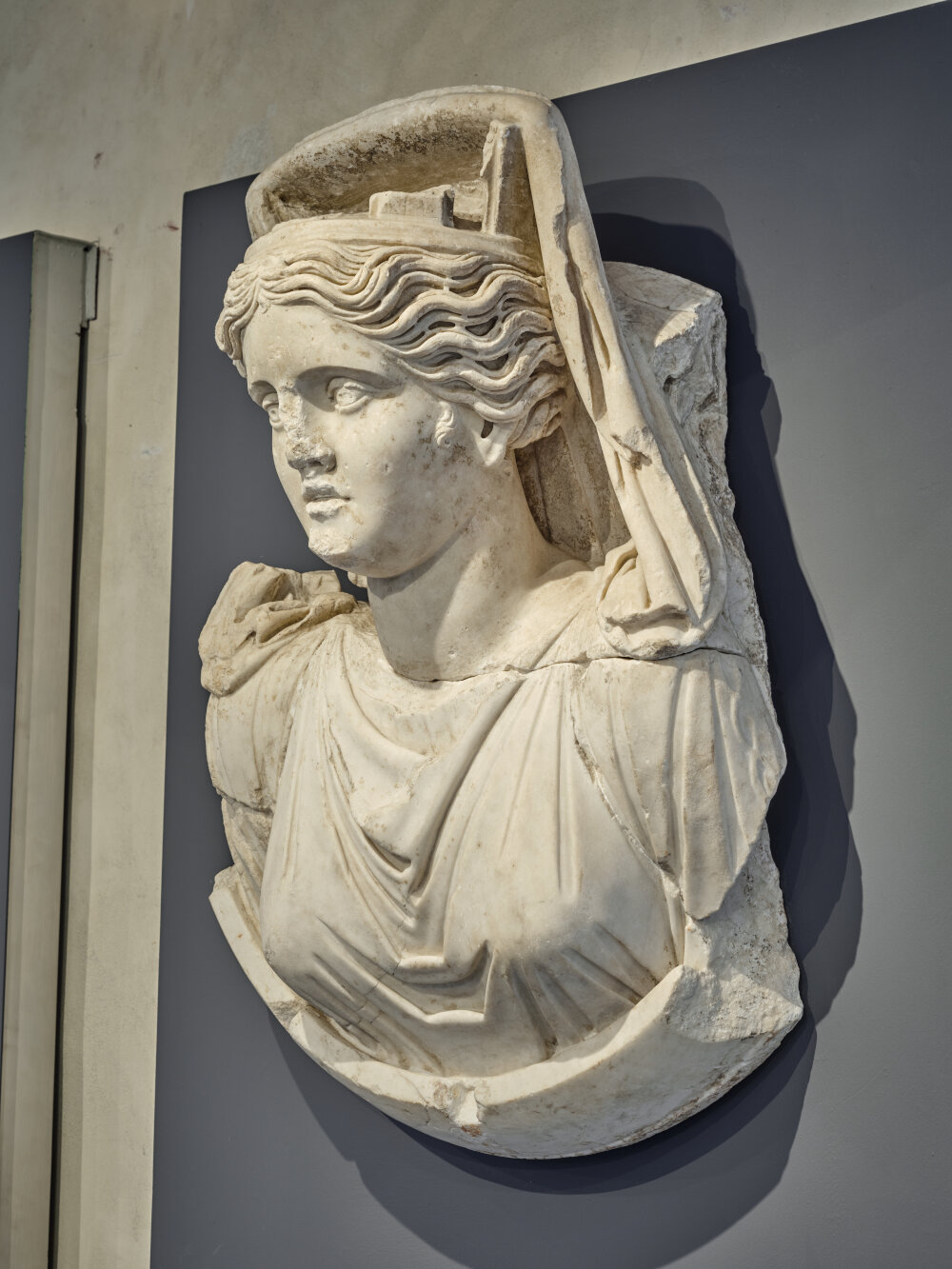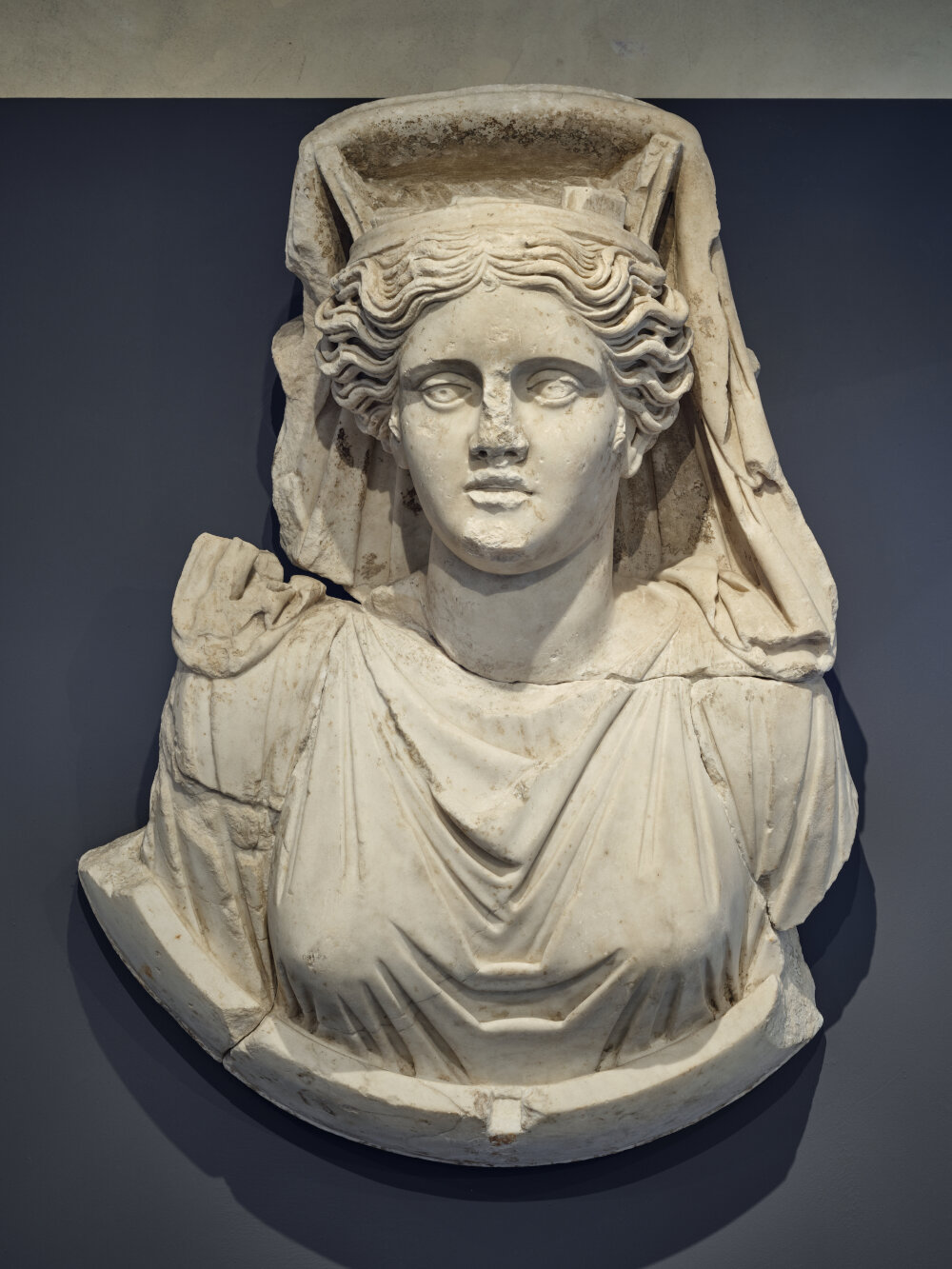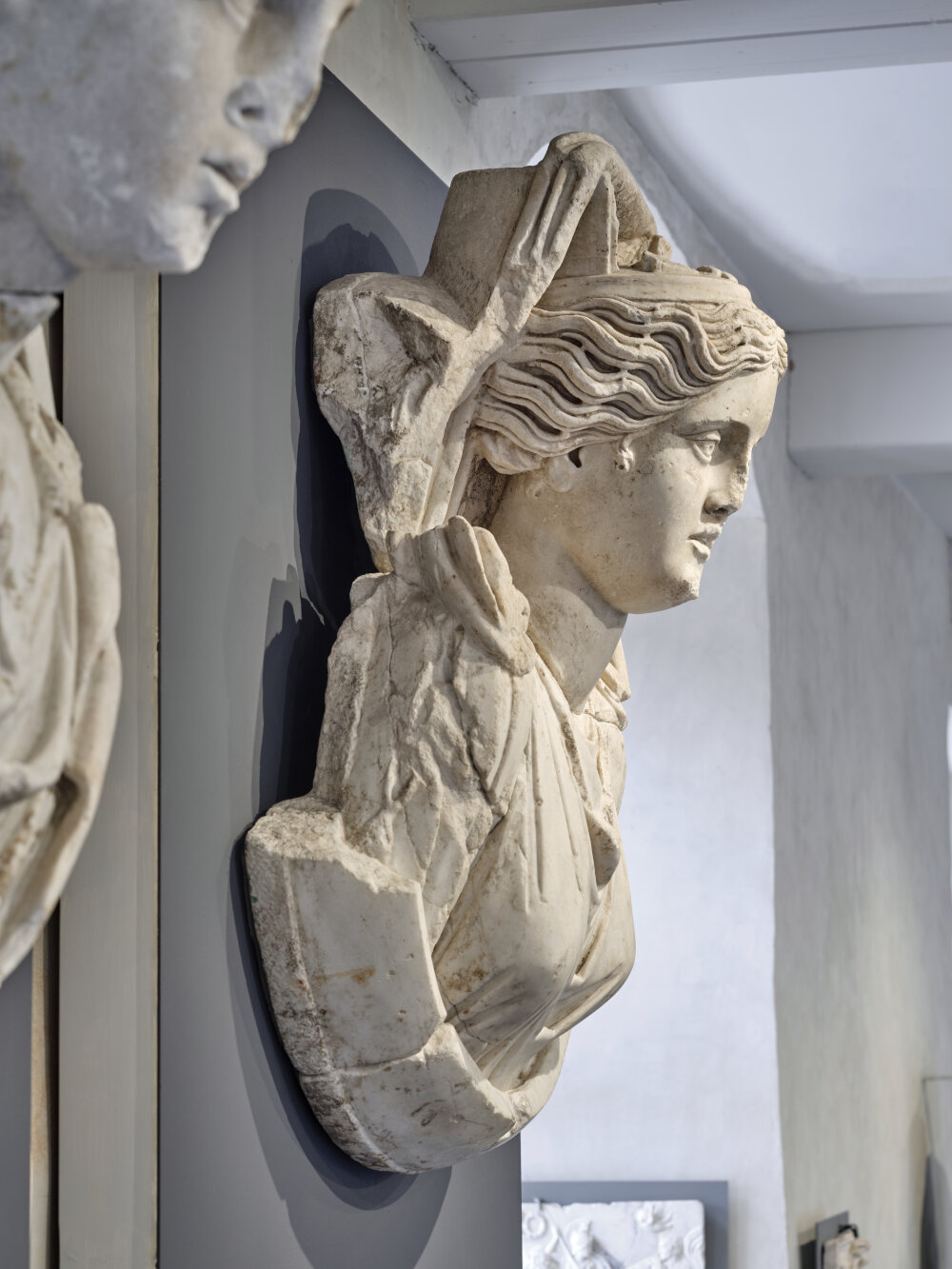Cybele




- Date de création
- End of the 3rd century
- Material
- Saint-Béat marble (Haute-Garonne)
- Dimensions
- H. 91 x l. 72 x P. 40 (cm)
- Inventory number
- Ra 34 i
- Photo credits
- Daniel Martin
Often referred to as « Great Mother of the Gods », Cybele was the patron saint of wildlife and fertility. Her cult had its roots in Phrygia (Anatolia) and gradually extended to the entire Mediterranean basin. In 204 BC, Rome, threatened by the Carthaginians and led by Hannibal, sent for the black stone (possibly a fragment of a meteorite) from the sanctuary of the goddess in Pessinus, Phrygia. The Great Mother of the Gods or Mater deum magna was then introduced into the sacred enclosure, and a temple was devoted to her on the Palatine Hill, where Rome originated. The cult, known as Metroac, gradually became synonymous with universal religion, and Cybele was adopted as a goddess of salvation for all levels of society M. Sartre, L’Orient romain : provinces et sociétés provinciales en Méditerranée orientale d’Auguste aux Sévères (31 avant J.-C.-235 après J.-C.), Paris, 1991, p. 479.. Like Cybele, Attis, the paredra of the Universal Mother, also apparently enjoyed strong popularity under the Empire in the western provinces. Their cult became official in Lectoure (Gers) in particular; no less than twenty-two altars bore witness to the « regeneration of the forces of the Empire », from the time of the Antonines to the chaotic years of the military emperors during the 3rd century. The same probably happened, also in the 3rd century, in Lugdunum Convenarum (Saint-Bertrand-de-Comminges) P. Aupert, R. Turcan, « Attis et Cybèle à Lugdunum Convenarum (Saint-Bertrand-de-Comminges), » Aquitania, 13, 1995, pp. 179–192, en partic. pp. 189-192..
The damaged crown of the Great Mother in Chiragan resembles a rampart with towers, and is covered with a veil. This headdress points to the goddess’s protective powers in times of conflict. Admittedly, there was no shortage of conflict in the West during the 3rd century, and again at the beginning of the following century. Yet the goddess’s presence in the villa mainly testifies to her integration into the congregation of gods that made up the traditional pantheon. All of them, hanging from their shield-shaped mounts in the most prestigious parts of the estate, watched over the villa. It is easy to imagine the scenography of which they were an integral part: hung on the upper parts of the walls above the Labours of Hercules and their wealth of political references, these gods embodied the powerful connection between East and West.
P. Capus
Bibliography
- Aupert, Turcan 1995 P. Aupert, R. Turcan, « Attis et Cybèle à Lugdunum Convenarum (Saint-Bertrand-de-Comminges), » Aquitania, 13, pp. 179–192.
- Beckmann 2020 S.E. Beckmann, « The Idiom of Urban Display: Architectural Relief Sculpture in the Late Roman Villa of Chiragan (Haute-Garonne), » American Journal of Archaeology, 124, 1, pp. 133–160. p. 138-139, fig. 3
- Cazes et al. 1999 D. Cazes, E. Ugaglia, V. Geneviève, L. Mouysset, J.-C. Arramond, Q. Cazes, Le Musée Saint-Raymond : musée des Antiques de Toulouse, Toulouse-Paris. p. 84
- Clarac 1841 F. Clarac, Musée de sculpture antique et moderne ou Description historique et graphique du Louvre et de toutes ses parties : des statues, bustes, bas-reliefs et inscriptions du Musée royal des Antiques et des Tuileries, et de plus de 2500 statues antiques … tirées des principaux musées et des diverses collections de l’Europe… accompagnée d’une iconographie égyptienne, grecque et romaine…. Tome II, Paris. p. 585
- Espérandieu 1908 É. Espérandieu, Recueil général des bas-reliefs de la Gaule romaine, 2. Aquitaine, Paris. no 892
- Rachou 1912 H. Rachou, Catalogue des collections de sculpture et d’épigraphie du musée de Toulouse, Toulouse. no 34 i
- Roschach 1892 E. Roschach, Catalogue des musées archéologiques de la ville de Toulouse : Musée des Augustins, Musée Saint-Raymond, Toulouse. no 34 c
- Sartre 1991 M. Sartre, L’Orient romain : provinces et sociétés provinciales en Méditerranée orientale d’Auguste aux Sévères (31 avant J.-C.-235 après J.-C.), Paris.
To cite this notice
Capus P., "Cybele", in The sculptures of the roman villa of Chiragan, Toulouse, 2019, online <https://villachiragan.saintraymond.toulouse.fr/en/ark:/87276/a_ra_34_i>.